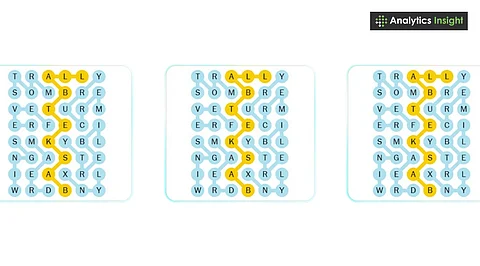

The NYT Strands puzzle for July 18 conjures the art of stage magic through subtle language and clever cues
The spangram ITSMAGIC links spellbinding tricks such as ESCAPE, DISAPPEAR, and MULTIPLY
A graceful homage to misdirection, belief, and the quiet thrill of being amazed
The July 18 NYT Strands puzzle starts not with a burst of light, but with the gentle whisper of velvet. A silence descends, not the kind to muffle, but the kind to welcome. You are not in the audience tonight. You are venturing behind the curtain, into a world where everything is seldom what it appears.
These are not merely words. They are tricks, imitations of procedures observed in smoky salons or gilded stages. This puzzle doesn’t provide reasoning. It provides wonder.
This is a performance delivered in letters, no wires, no mirrors, only the soft machinery of enchantment. Each word is a crafty, a gesture, a measured impossibility. But collectively, they become something more: the implication that belief, no matter how momentary, is reward in itself.
A 6x8 grid, waiting to be uncovered.
Embedded within are theme words, which turn blue when discovered.
One spangram, radiant yellow, spans edge to edge and harmonizes the experience.
Letters do not duplicate. NYT Strands hints and answers occupy their own unique space.
Stuck? Enter any unrelated 4+-letter word to get a nudge, a whisper from the inside circle of the puzzle.
ITSMAGIC – Not a boast, not a joke. An explanation for the inexplicable. It doesn’t ask for belief, it welcomes it. Like all great illusions, it gives just enough to question, and not quite enough to answer.
ESCAPE – Not leaving, but evading. Getting away from keys, away from reason.
TRANSFORM – What is, isn’t anymore. What is. Is now.
MULTIPLY – A single card. Then two. Then twenty. A silent chaos.
DISAPPEAR – Rather than disappearing. An illusion of nothingness. The tale left untold.
LEVITATE – The absurd, unencumbered by gravity or logic. Carried. Suspended. Believed.
The July 18 NYT Strands answers are not a series of tricks; it’s a whispered love letter to wonder. In an era of explanation, it boldly celebrates mystery. These are not mere stage tricks, not scholarly definitions of illusion. They are the vocabulary of surprise, the grammar of belief held off just long enough for awe to flood in.
NYT Strands today does not require your logic. It requires your attention.
It does not roar. It whispers, Watch closely.
And when it is over, there is no thunderous applause. Only silence and the overwhelming urge to watch again.
